There is a peculiar intensity in the way some people regard Freemasonry, and it has always interested me. To the point that I have now done a deep dive into the subject. My first personal experience of an anti-Freemason came when I attended an FITC event at a local fete a couple of years ago. A woman came up to me while I was standing in the crowd, talking to anyone interested in Freemasonry, and started grilling me quite hard about why I was a Freemason, to the point that I could see she was getting angrier with every question she asked. I don’t know if it was because she didn’t like my answers, but I was being truthful.
After that encounter, I became aware that the happy, charitable, sociable, and brotherly world I knew from my years in Masonry is not what is seen by everyone.
For some, it is not mere indifference or mild curiosity; it is a deep-seated, almost visceral dislike, sometimes manifesting as conspiracy theories, wild accusations, or outright hostility. Since that day, I have often wondered why a society that seeks light, charity, and self-improvement attracts such furious opposition.

The first thing to understand is that much of the animosity is rooted not in fact, but in fear. Humans have a natural tendency to distrust that which is hidden. Freemasonry, by its very nature, is selective. It requires a personal decision to knock on the door. Its workings are private, its symbolism rich and layered, and its history long. To someone standing outside, this can appear suspicious, elitist, or even threatening. The imagination fills the gaps, and where there is mystery, myths take root.
History of Anti-Masonic Sentiment

Historically, Freemasons have been blamed for societal upheavals, political movements, and cultural shifts. In the 18th and 19th centuries, Freemasonry in Europe and the United States faced intense scrutiny. In some countries, it was banned outright, accused of undermining religion, monarchy, or social order. To the point where we were hunted by the Nazi’s in the Second World War. The so-called “Anti-Masonic Party” in the U.S. during the 1820s and 1830s is a particularly striking example that fear and suspicion of secret oaths can lead to political mobilisation against Masons, even influencing elections.
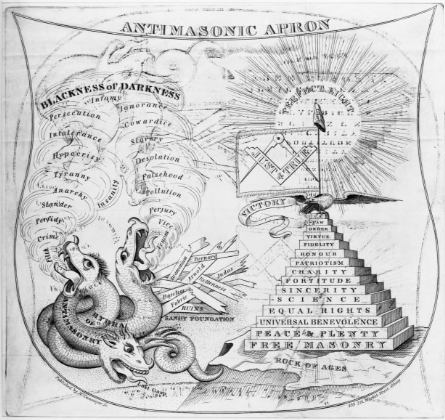
One of the most famous flashpoints was the Morgan Affair of 1826 in New York State. William Morgan, a man who claimed he was going to publish a book revealing Masonic secrets, disappeared under mysterious circumstances after being arrested and later released from custody. Many believed that local Freemasons had abducted and murdered him to protect their secrets. Although evidence was scarce and no conclusive proof ever surfaced, the story ignited national outrage.

The scandal gave rise to a wave of anti-Masonic hysteria across America, fuelling suspicion and moral panic. This atmosphere led directly to the formation of the Anti-Masonic Party, the first third political party in U.S. history, which campaigned on opposing Freemasonry as a threat to democracy and Christian values. The public backlash was so severe that hundreds of Lodges closed, and membership numbers plummeted for decades.

The wave of anti-Masonic sentiment in the U.S. did not end with the Anti-Masonic Party. Over a century later, during the 1990s, Freemasonry again faced targeted attacks, this time from a faction within the Southern Baptist Church. They made repeated attempts to bar church members from joining the Craft. Some observers at the time noted the potential for the issue to cause devastating divisions at the local church level, with Baptists fighting other Baptists over membership in Masonic lodges. While these campaigns ultimately failed, the reach of their message extended far beyond American shores. Much of the anti-Masonic literature was published in the UK and adopted by various churches here, keeping suspicion and misunderstanding of Freemasonry alive across the Atlantic.
Around the same time in the UK, in June 1988, Parliament debated Freemasonry’s influence in the police. One MP said officers had written to him claiming Freemasonry was widespread and that some non-Masons felt fairness wasn’t always guaranteed. (Hansard, 1988)
Nearly a decade later, Statewatch reported that police, judges, and prosecutors were asked to declare their Masonic membership. A voluntary register was created, but few came forward, and it quickly lost credibility. (Statewatch, 1997). It shows how suspicion often grows not from evidence of wrongdoing, but from the secrecy people think exists.
In more modern times, conspiracy theories still persist. In November 2023, the Vatican once again reaffirmed its long-standing ban on Catholics joining Freemasonry. This came after a bishop in the Philippines raised concerns about a growing number of Catholic Freemasons. The Vatican’s doctrinal office responded clearly, saying that membership in the Craft remains incompatible with Church teaching, and that any Catholic who joins is considered to be in a state of serious sin.

And even in September of this year, 2025, a news article came out reporting that Officers in the Metropolitan Police could soon be made to tell bosses if they are part of the Freemasons. The Met does not currently record how many officers are Masons, and has never banned them from joining, but said concerns had been raised by officers and staff about the impact that membership of such a group could be having on “investigations, promotions and misconduct”.
These claims of world domination, control of governments, and hidden manipulation often take on a life of their own, shared widely and repeated without evidence. To the untrained eye, secrecy can easily be conflated with malevolence.
The Devil Worship Myth
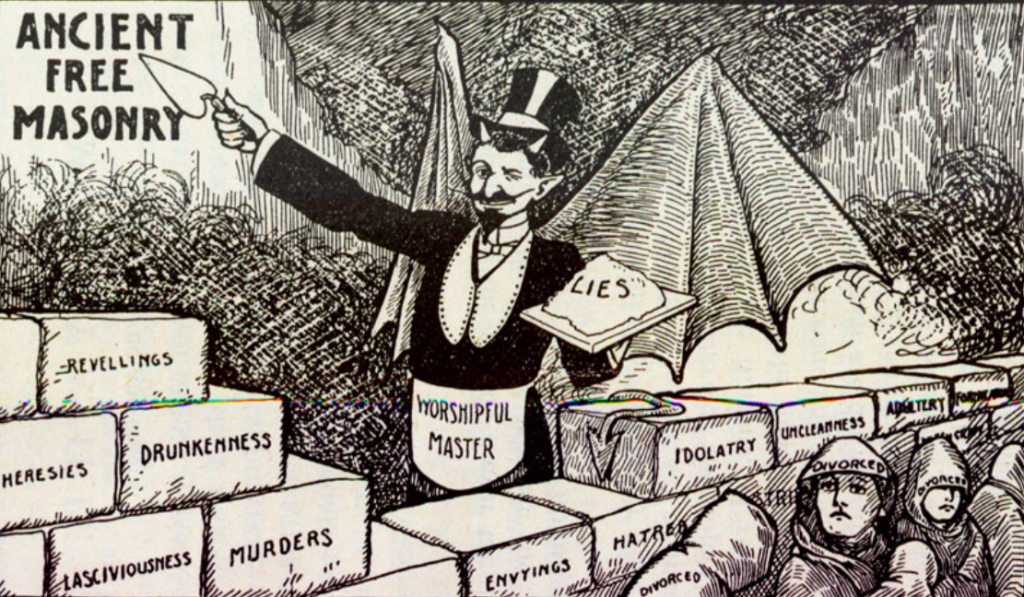
Perhaps the most extreme and persistent accusation is that Freemasons are devil worshipers. This claim has no basis in reality, yet it has circulated for centuries. It largely stems from misunderstanding Masonic symbolism and ritual language, combined with fear of secret societies.
Freemasonry is not a religion, nor is it anti-religion. Every candidate must profess a belief in a Supreme Being. At the start of their journey, they are asked the question, Do you believe in a supreme Being. There is no follow-up question of ‘’which one’’. They may say if they wish, but that is their choice. Our symbols, squares, compasses, pillars, tracing boards, are moral and philosophical tools, not signs of occult or satanic practice. The idea of devil worship arises from conflating symbolic allegory with literal intent. The rituals, as taught and published by the United Grand Lodge of England (UGLE), make this clear: Masons meet to improve character, cultivate virtue, and engage in charitable works, not to invoke evil.
I’m not going to proclaim that no Mason has ever been of an evil nature, as I’m sure there may have been some. But what you have to keep in mind is that we all have the capacity to do evil. There have been many deeply religious people throughout history who have committed terrible acts in the name of their faith and called it necessary for the greater good. For example, Tomas de Torquemada, the first Grand Inquisitor of Spain, believed he was saving souls when he ordered the torture and execution of thousands. Ashin Wirathu, a Buddhist monk in Myanmar, preached hatred against Muslims, fuelling violence and persecution, yet he claimed to be defending his religion. Hasan Sabbah, a Muslim leader of the 11th century, justified assassination and terror as holy acts to protect his sect. And Baruch Goldstein, a Jewish extremist in the 1990s, murdered innocent worshippers, believing he was fulfilling a divine command, a crime universally condemned by Jewish leaders.
My point is not to condemn faith, but to show that human beings, even the most devout, can mistake conviction for righteousness. Freemasonry, on the other hand, asks its members to continually and frequently examine their own motives and actions, to seek truth rather than assume it. That is the real safeguard against evil.
In my research on this topic, I have found that evidence is readily available for those who will look properly. UGLE publications, including The Freemasons’ Handbook and guidance notes on ritual and symbolism, clearly state that all Masonic work is moral and instructive. No part of our ceremonies involves worship of any entity other than the Supreme Being that each member personally recognises. The Charity Commission and countless public records also show Freemasons consistently engage in humanitarian and community-focused activities, further disproving these claims.
Ceremonies Are Not For Everyone
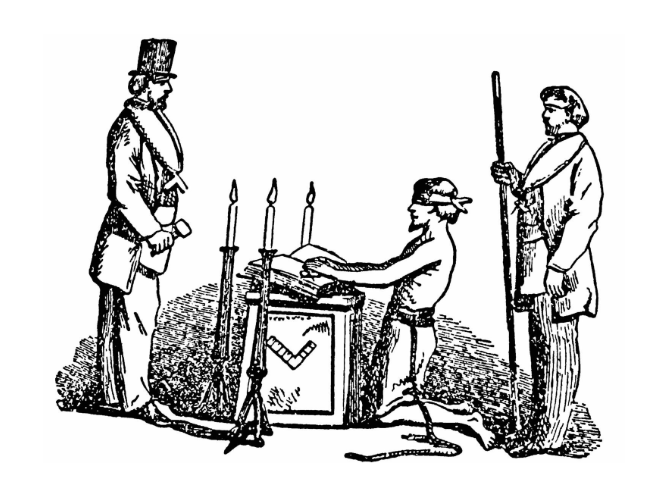
One important point often overlooked is that Masonic ceremonies can seem unusual, even strange, to those who have never witnessed them. The symbolism, allegorical drama, and ritual actions are designed for moral instruction and reflection. They are not meant to be immediately understood by outsiders. To someone unfamiliar, a meeting might appear bizarre, theatrical, or even intimidating. And by just reading about it or looking at pictures, you can’t fully understand.
Years ago, I knew I wanted to be a Mason when I first heard about them. Many things attracted me to it, but at that time, I did not pursue it fully and didn’t do any proper research before I actually joined. The night of my initiation, I had no idea of what I was walking into, and yes, I found it strange, not in a bad way, just…. Different. Something I don’t think I could ever have imagined. Although to begin with I found it strange, in just a short time I made a conscious effort to learn as much as I could to understand why things were done and said the way they were, and now none of it is strange, it all makes sense, and I try to apply the teachings to my own life, to become a better person, both personally and professionally.
Simple things, like the way I sit and stand, the way I speak, even the vocabulary I use now, all stem from the teachings of Masonry. The great Earl Nightingale, a well-known motivational speaker and author, who inspired myself and many other people over time, wrote in his book, Lead the Field:
“Just as a stone mason can put only one stone in place at a time, you can live only one day at a time. And it’s the way in which these stones are placed that will determine the beauty and the strength of the tower.”
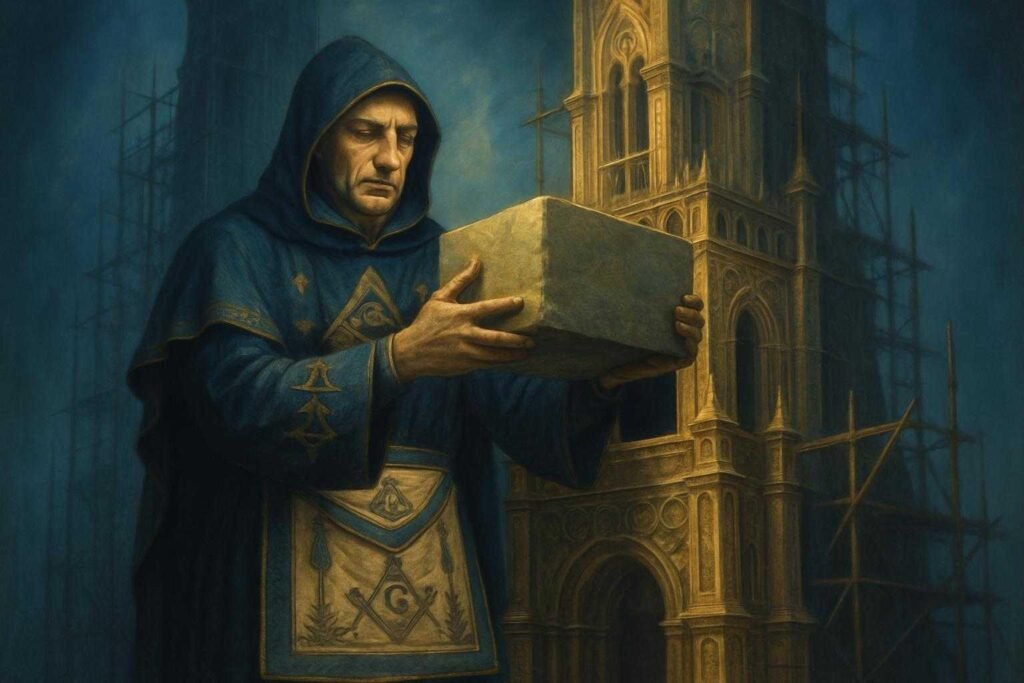
This quote beautifully captures how small daily actions, carried out with care, purpose and precision, ultimately shape the quality of our lives and of ourselves. I was delighted to discover, while writing this article, that Nightingale himself was also a Mason.
Strangeness can amplify suspicion. When people see men performing gestures, speaking in formal language, or following ceremonial steps they do not understand, the mind often fills the gaps with conjecture, and misinterpretation comes easily. It is not a reflection of malevolence, but of unfamiliarity. Freemasonry does not seek to shock; it aims to teach, through a language of symbols that is intentionally immersive and reflective.
The Meaning of Secrecy and Trust

Much has been made about the “secrets” of Freemasonry, as though behind every handshake or sign lies some dark or powerful knowledge. But in truth, these simple things are not secrets of power; they are symbols of trust.
If I cannot be trusted to keep something as harmless as a handshake or a word from a ceremony in confidence, then why should anyone trust me with anything else? In life, we all share personal matters with friends or loved ones that we wouldn’t want spread about. The discipline of secrecy in Freemasonry is the same principle, refined into practice.
It is a test of honour, a way of proving that a man’s word still means something. When a Mason gives his promise, I have complete trust that he will keep it. That reliability forms the foundation of trust, not only within the Lodge, but in daily life. For example, my sons may one day choose to become Masons, but I have never shared a single detail of what we do or say within our ceremonies. To do so would be to break the obligation I gave my word to uphold. Even my wife has never heard a word of the ritual practice I do at home.
This idea of keeping faith with one another, of guarding confidences, of being reliable, is what turns a collection of individuals into a Brotherhood. The secrets themselves are simple, and sometimes small and insignificant, but what they represent is profound: integrity, loyalty, and respect.
“To be trusted with the small things proves a man can be trusted with greater ones. That, in essence, is the real secret.” and why so many great men in history were Masons.
The Psychological Roots
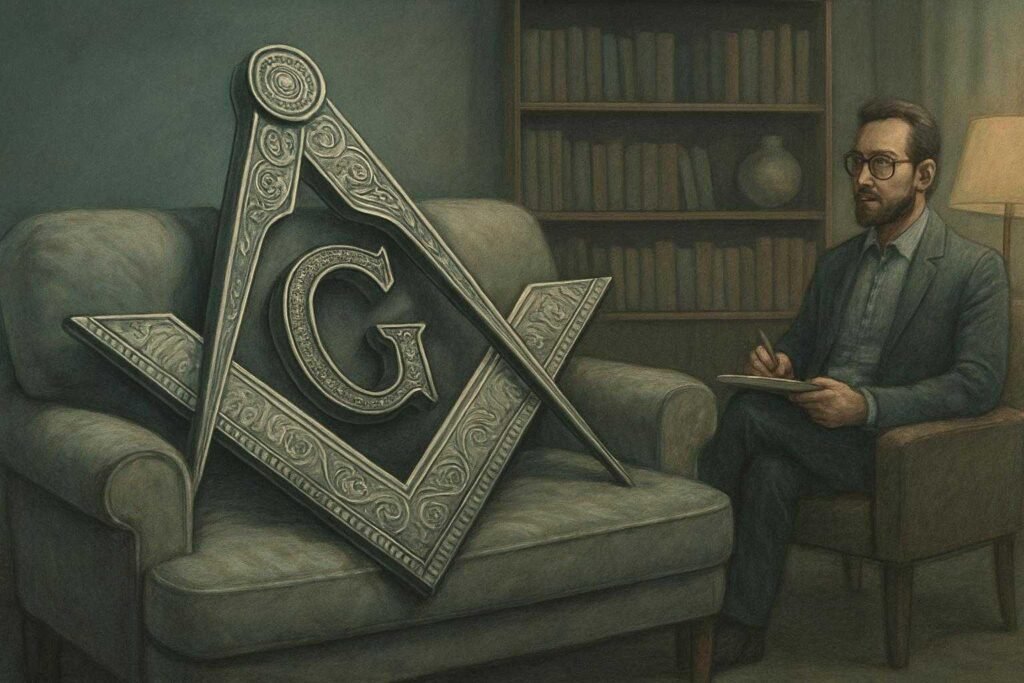
There is a deeper, psychological dimension to animosity. Humans are naturally wary of groups that appear exclusive. Selectivity can suggest power, and power, when unseen, can breed fear. Observing a group dedicated to self-discipline, moral reflection, and charitable action can, in some, provoke envy or suspicion.
Conspiracy thinking often arises from a desire for simple explanations in a complex world. A secret society can serve as a convenient explanation for the uncertainties and chaos of life. The mind seeks patterns, even where none exist. And when those patterns are framed in stories of manipulation or wrongdoing, fear and hatred can form.
Common Myths About Freemasonry
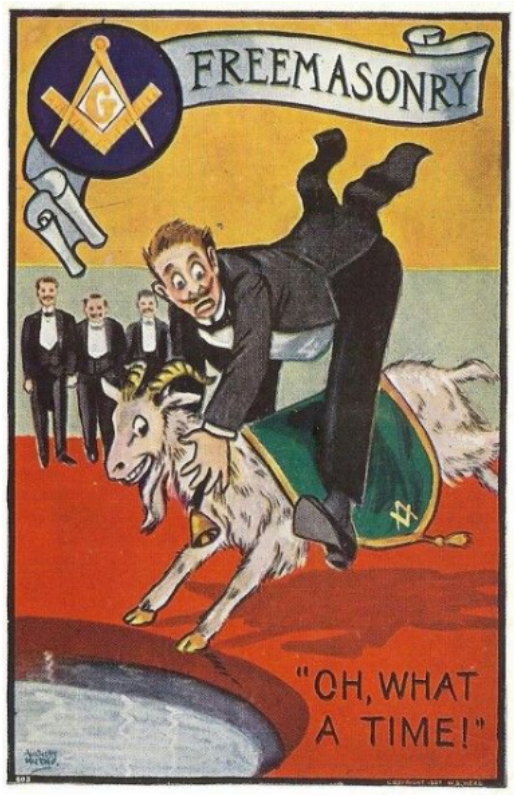
Many anti-Masonic beliefs stem from misunderstandings:
- The belief that Freemasons control governments or banks — A persistent myth, rooted in the visibility of some Masons in positions of public service, but conflating individual achievement with group conspiracy.
- The idea that Freemasonry is anti-religion — The Craft welcomes men of all faiths, and its teachings emphasise moral responsibility, not dogmatic opposition.
- The notion of devil worship — Completely false; Masonic ritual is symbolic and moral, not occult.
- The strangeness of ceremonies — What outsiders find odd or theatrical is actually moral instruction in symbolic form.
- Secrets as a tool for manipulation — The private nature of ceremonies is misunderstood. Ritual is symbolic, intended to instruct the individual, not to control society.
- “You’re just not high enough to know the bad stuff,, A familiar accusation, implying deeper, hidden levels where darker acts take place. In truth, Freemasonry under the United Grand Lodge of England has no hidden hierarchy beyond the well-documented degrees. The Royal Arch does expand on moral teachings, but definitely not secret plots. Everything is openly published, regularly inspected, and conducted under clear ethical guidance. There is no “upper tier” where forbidden knowledge or sinister rituals exist, that idea is a myth, fuelled by imagination and distrust.
- The Goat Myth, Well… I think we have all had a bit of fun with a new candidate at some point, joking about when they’ll meet the goat. But again, not true in the slightest, just having a bit of fun joking about.
Each myth, once repeated, gains weight, and for some, it becomes easier to hate than to seek understanding.
How Minds Might Be Changed
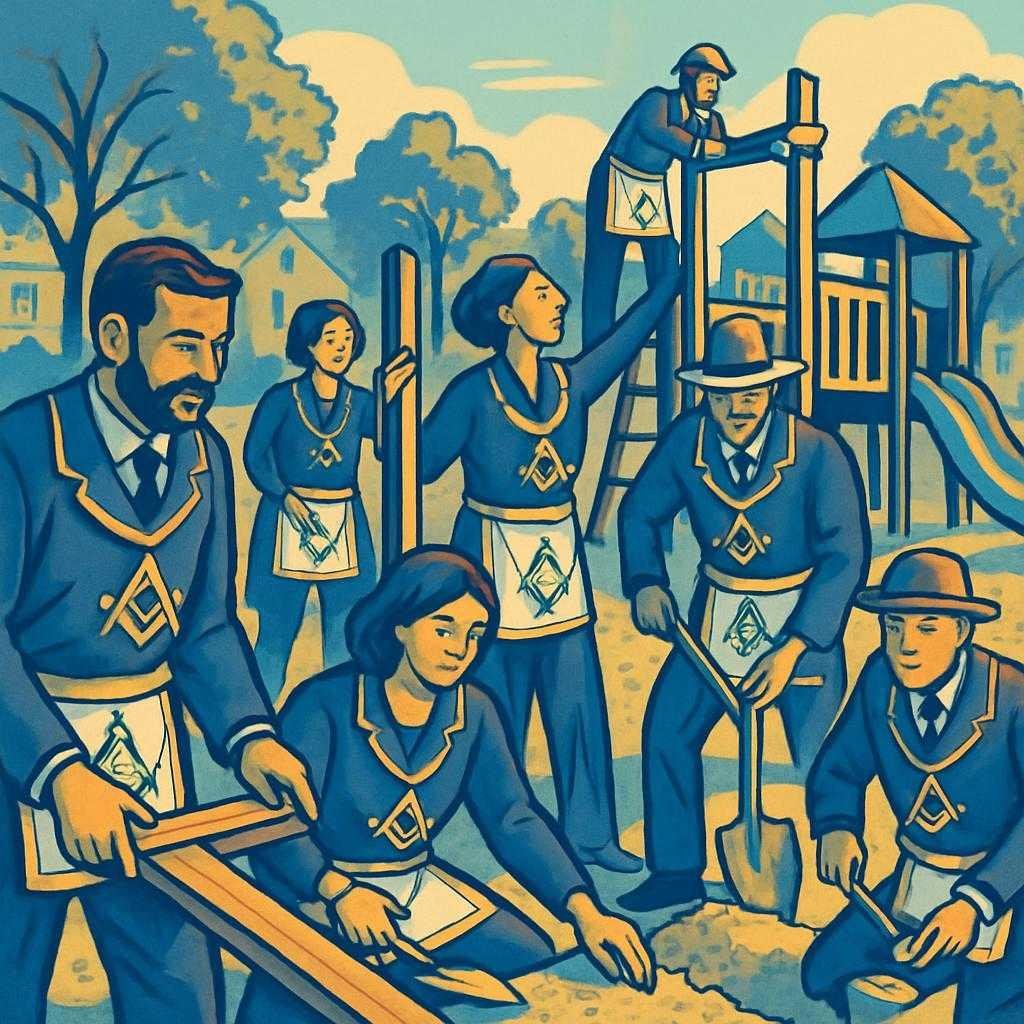
So, how might minds be changed? The first step is understanding. Those who hate Freemasonry often do so because they do not know it. Knowledge dispels fear. A conversation, a shared lecture, or a clear explanation of what we truly do can go a long way. It is not a question of convincing someone overnight, but of gently demonstrating that what lies behind the closed doors is not secrecy for secrecy’s sake, but a dedication to principles that benefit society.
Empathy is another key. Listening without judgment, acknowledging the concerns of others, and showing the humanity within our Craft can soften even the hardest perspectives. When we stop seeing the world solely through the lens of what “they” might be hiding, we begin to recognise the ordinary, very human men behind the aprons, men who wrestle with the same questions of morality, purpose, and community that occupy every thoughtful mind.
Personal encounters often work wonders. I have heard of men who once expressed intense suspicion or contempt, only to discover, after attending a talk or meeting Masons in their everyday lives, that the image they carried was false. Experience, seeing kindness, charity, and honesty, can dismantle prejudice faster than any argument.
And yet, it is important to accept that not all minds will be changed. Some are wedded to mistrust, some are locked in ideology, and some simply cannot see beyond the myths that have surrounded Freemasonry for centuries. That is not a failure of the Craft; it is a reflection of the human condition. We do not need universal approval. We only need to live our principles with integrity, knowing that our work speaks in ways words often cannot.
Freemasons and the Pursuit of Truth
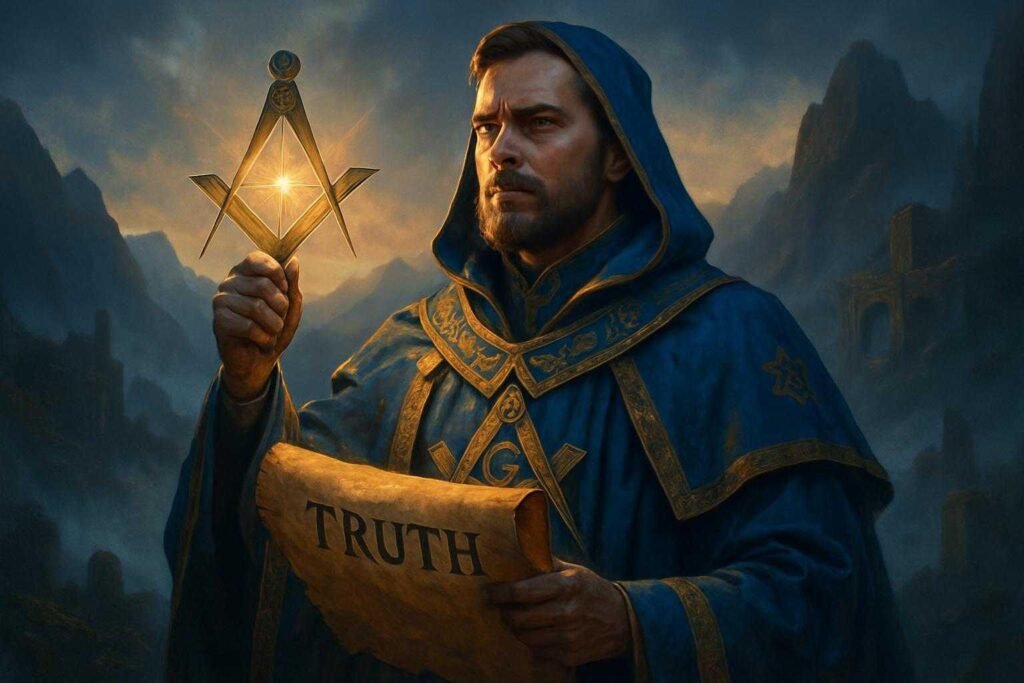
At the heart of Freemasonry lies one of its oldest guiding principles: Brotherly Love, Relief, and Truth.
Truth, in Masonic understanding, is not simply factual accuracy, it is moral truth, self-knowledge, and the relentless search for what is right and real. A true Mason does not rely on hearsay or idle gossip; he seeks understanding through study, reflection, and experience.
“We are taught to build our lives upon the square of truth, not upon rumour, speculation, or suspicion.”
Those who criticise the Craft often do so based on assumptions and second-hand tales. Masons, by contrast, are instructed to test all things, to weigh evidence, and to think for themselves. It is this quiet pursuit of truth within and without that guides the moral journey of every Brother.
In a world filled with misinformation, that principle matters more than ever. Freemasonry asks its members to be seekers of truth, not followers of fashion; to measure words and deeds against the plumb line of honesty; and to extend that same integrity in their dealings with others, whether inside or outside the Lodge.
If more people understood that Freemasonry’s foundation is truth, not secrecy for secrecy’s sake, much of the suspicion surrounding it would dissolve like mist in the morning light.
The Quiet Power of Example
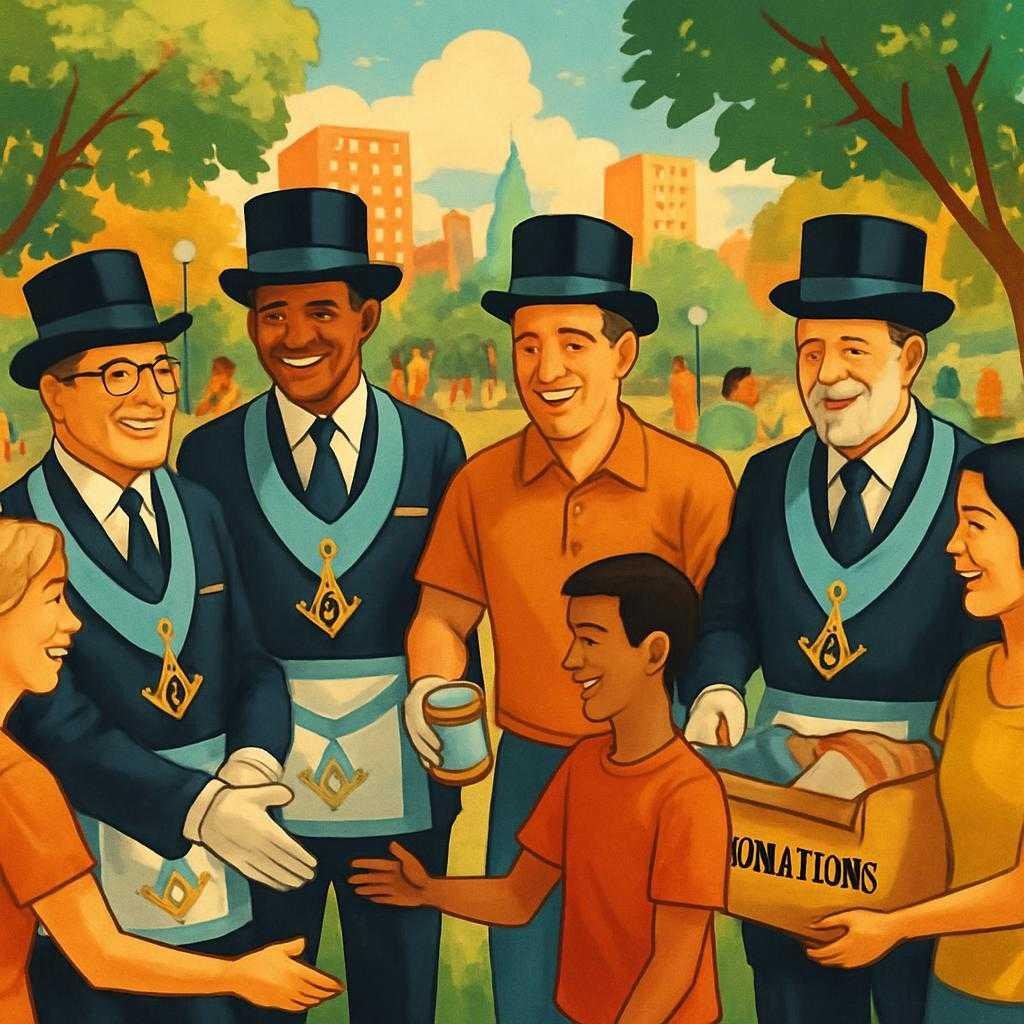
Perhaps, the answer is not to fight against hatred, but to let our light shine quietly in our actions. To embody the very lessons we teach. To be patient, steadfast, and sincere. The way we treat our families, our neighbours, our communities, that is the demonstration of our principles.
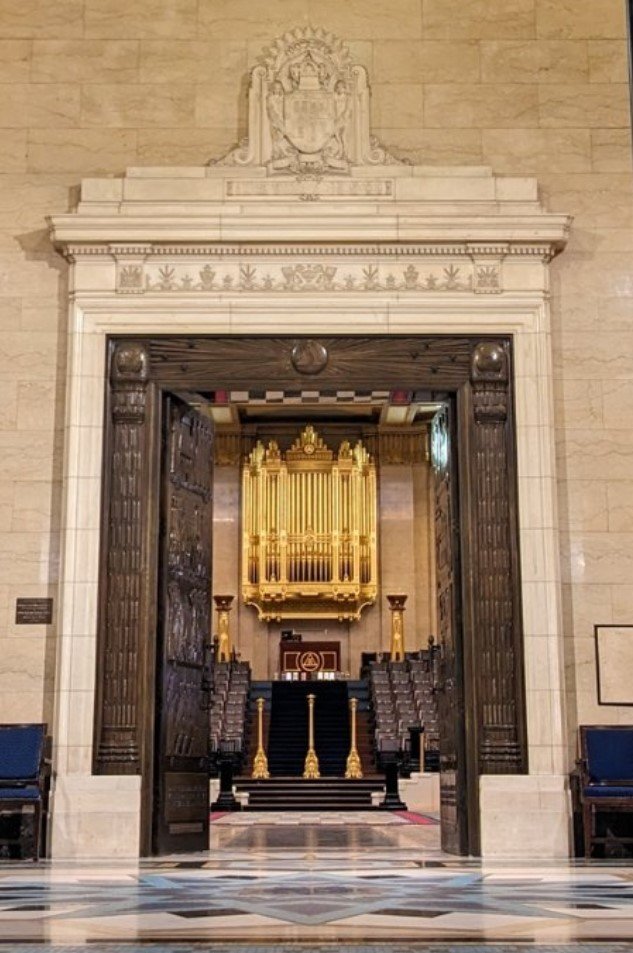
For those willing to look beyond fear and hearsay, the door remains open to all who wish to enter. And perhaps, in time, even the most suspicious minds may step forward, one cautious foot at a time, drawn not by argument, but by the quiet, unassuming example of men who live as they teach.
I am glad I finally had the opportunity to become a member, in Masonry as a whole, and of my Lodge. I have met some great people that I will call brother and friend for hopefully the rest of my life. And they come from all walks of life. Just and Regular guys with all kinds of professions and backgrounds.
The more articles I write, the more I’ve learned about Freemasonry through the research I’ve done. With every question I ask, the answers seem to spark even more questions. Writing this piece in particular has been a real education for me. Each time I put words on the page, I uncover another layer of understanding, another reason why Freemasonry remains both misunderstood to the uninitiated and deeply meaningful to so many who have chosen to seek for truth.
Sources
- United Grand Lodge of England (UGLE). What is Freemasonry? Retrieved from https://www.ugle.org.uk
- UGLE Solomon. Learning & Development Platform. Retrieved from https://solomon.ugle.org.uk
- Freemasonry Today. Myths About Freemasonry. Retrieved from https://www.freemasonrytoday.com
- Grand Lodge of Scotland. About Freemasonry. Retrieved from https://www.grandlodgescotland.com
- Encyclopaedia Britannica. (n.d.). Tomás de Torquemada. Retrieved from https://www.britannica.com/biography/Tomas-de-Torquemada
- United Grand Lodge of England (UGLE). Principles of Freemasonry: Brotherly Love, Relief and Truth. Official Statement, 2021. Retrieved from https://www.ugle.org.uk/about-freemasonry/principles
- EBSCO Research Starters. (n.d.). Tomás de Torquemada. Retrieved from https://www.ebsco.com/research-starters/history/tomas-de-torquemada
- The Guardian. (2013, April 18). Buddhist monk uses racism and rumours to spread hatred in Burma. Retrieved from https://www.theguardian.com/world/2013/apr/18/buddhist-monk-spreads-hatred-burma
- TIME Magazine. (2013). The Buddhist Monks Advocating Intolerance in Asia. Retrieved from https://content.time.com/time/subscriber/article/0,33009,2146000,00.html
- Encyclopaedia Britannica. (n.d.). Hasan-e Sabbah. Retrieved from https://www.britannica.com/biography/Hasan-e-Sabbah
- Encyclopaedia Iranica. (n.d.). Ḥasan Ṣabbāḥ. Retrieved from https://www.iranicaonline.org/articles/hasan-sabbah
- EBSCO Research Starters. (n.d.). Baruch Goldstein. Retrieved from https://www.ebsco.com/research-starters/biography/baruch-goldstein
- My Jewish Learning. (n.d.). Baruch Goldstein. Retrieved from https://www.myjewishlearning.com/article/baruch-goldstein
- History.com – How the Disappearance of a Freemason Helped Create America’s First Third Party. https://www.history.com/news/anti-masonic-party-william-morgan-freemasons
- Met officers could have to reveal Freemason ties. https://www.bbc.co.uk/news/articles/cqxzdppdd48o
